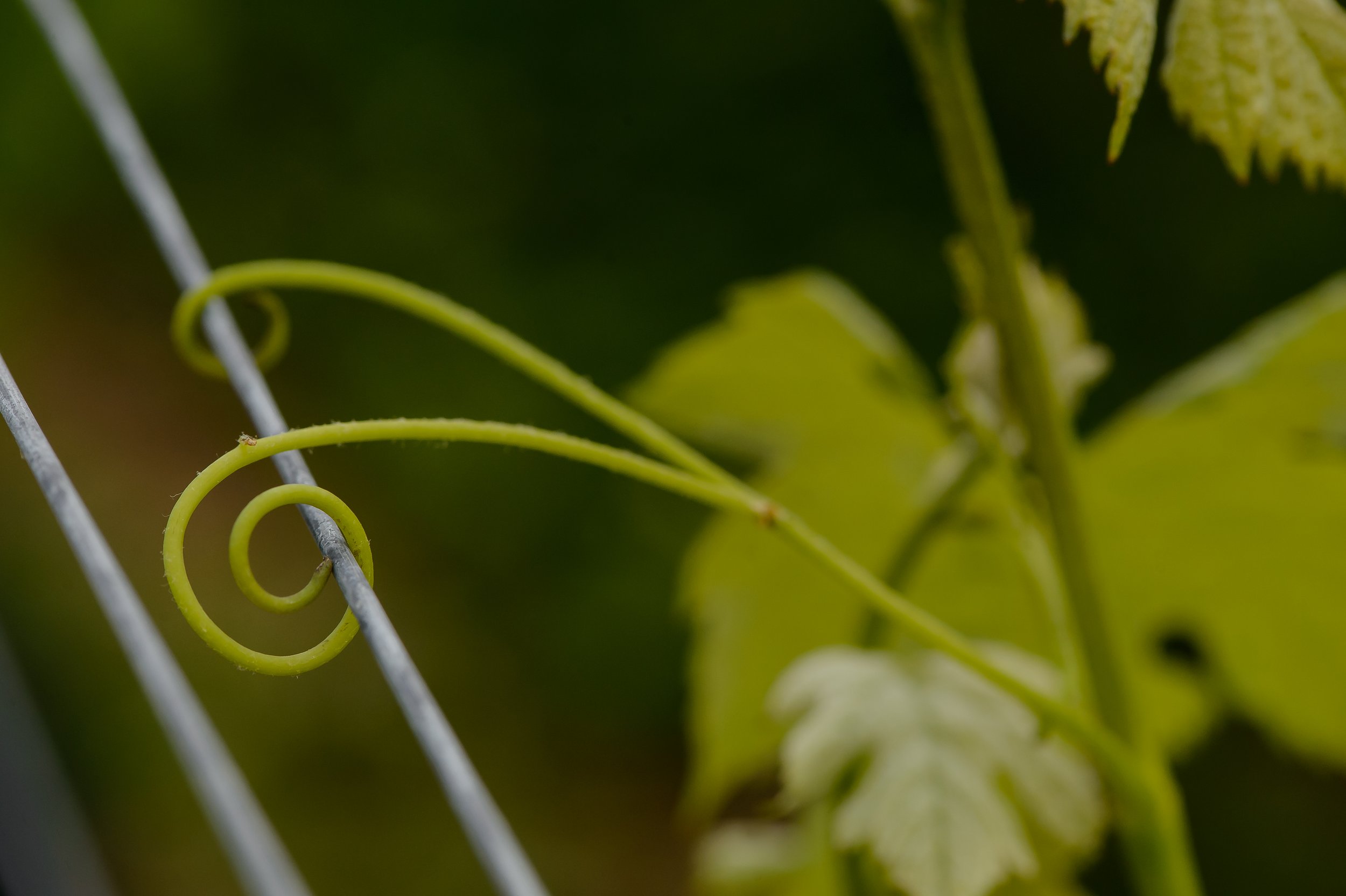Agriculture is at a crossroads. We can continue to degrade the environment. Or we can restore it. At Dodon, we’ve chosen the latter.
With nature as our guide and learning from those who went before us, we seek to reduce our chemical and physical footprint while returning life and biology to the landscape. It starts by enhancing the biodiversity within and around the vineyard. Spontaneously growing, native and naturalized cover crops, compost, and livestock regenerate soil, add microbial diversity, and restore underground ecosystems.
Acres of pollinator meadows and hedgerows that include traditional indigenous food sources like hazelnuts, dwarf chestnuts, and Chickasaw plums provide beneficial insects with the food, shelter, and breeding areas they need to thrive. These “natural areas” cover more than half of the 43 acres we manage.
The biodiversity also creates the conditions to store water for drought and allow it to infiltrate during intense downpours. The combination of grasses and woody plants stabilizes the soil, preventing erosion and nutrient pollution. Disease-suppressive soils protect the vines from microbial pests. Improved nutrition creates healthier plants and more expressive wines. As a result, we’ve reduced insecticide use by 70% and fungicide use by a third.
Perhaps most important, we remove more than 250 tons of carbon dioxide from the atmosphere annually, equivalent to the emissions from thirty thousand gallons of gasoline.
And despite increasingly difficult conditions, when these methods are combined with meticulous canopy management, yields and fruit quality have consistently improved. It is a resilient, healthy ecosystem living in harmony and reciprocity with its human inhabitants.
You can read more about Dodon’s ecological journey on the blog page.
At Dodon, we live and work attentively and intentionally in a landscape of native woodlands, pastures, and wetlands. It is inexhaustibly beautiful.


